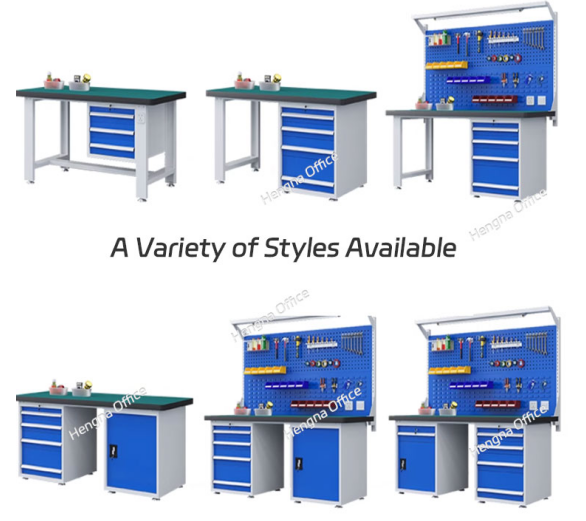How to Decide on the Right Heavy – Duty Workbench Size
Introduction
Selecting the appropriate size for a heavy – duty workbench is a critical decision that impacts workflow efficiency, workspace utilization, and overall functionality. Whether you’re setting up a new workshop or upgrading an existing one, getting the size right ensures that the workbench meets your specific needs. This guide will help you navigate the process of determining the ideal size for your heavy – duty workbench.

- Assess Your Workspace
The first step is to take a detailed look at the available workspace. Measure the length, width, and height of the area where you plan to place the workbench. Consider not only the floor space but also the vertical space, as some workbenches may have overhead storage or require clearance for tall tasks. It’s important to leave enough room around the workbench for easy movement, both for yourself and for any equipment or materials you need to maneuver. For example, if you’re working with large machinery or tools, you’ll need sufficient space to access all sides of the workbench without obstruction. - Consider the Types of Tasks
Think about the tasks you’ll be performing on the workbench. If you’re mainly doing small – scale, precision work, a smaller workbench might suffice. However, if you’re involved in large – scale projects such as woodworking with big lumber pieces or assembling large equipment, a larger workbench is necessary. For instance, a mechanic working on car engines will need a wider and longer workbench to accommodate engine blocks and other large components. On the other hand, a jeweler may only need a compact workbench with a focus on a small, precise work area. - Account for Storage Needs
Heavy – duty workbenches often come with built – in storage options like drawers, shelves, or cabinets. If you plan to use these storage features, you need to factor in the space they occupy. Drawers, for example, require extra depth both for the drawer itself and for the space needed to open them fully. Consider the size and quantity of the tools, materials, and equipment you need to store. If you have a large collection of hand tools, you’ll need more drawer or shelf space, which may mean a larger workbench overall. - Evaluate Future Growth
It’s also wise to consider your future needs. If you anticipate expanding your workshop or taking on larger projects in the future, it might be beneficial to choose a slightly larger workbench now. This way, you won’t outgrow the workbench too quickly and will avoid the hassle and cost of replacing it in the near future. For example, a hobbyist woodworker who currently works on small projects but plans to start building larger furniture pieces should take this future growth into account when selecting a workbench size. - Check Standard Sizes and Custom Options
Heavy – duty workbenches come in a variety of standard sizes. Familiarize yourself with these to get a starting point. However, don’t be limited by standard sizes if your needs are unique. Many manufacturers, like Luoyang Hengna Office Furniture Co., Ltd., offer custom workbench size options. If your workspace has unusual dimensions or your tasks require a specific size, exploring custom options can ensure you get the perfect fit.
Conclusion
Deciding on the right heavy – duty workbench size involves a careful assessment of your workspace, the tasks at hand, storage requirements, future growth plans, and consideration of both standard and custom size options. By following these steps, you can select a workbench that enhances your productivity and fits seamlessly into your workspace.
Luoyang Hengna Office Furniture Co., Ltd. is a provider of office and industrial furniture, including heavy – duty workbenches. They understand the importance of getting the right size and can offer both standard and custom solutions to meet your specific needs. Whether you need a workbench for a small workshop or a large industrial setting, they can assist you in finding the ideal size and configuration.
